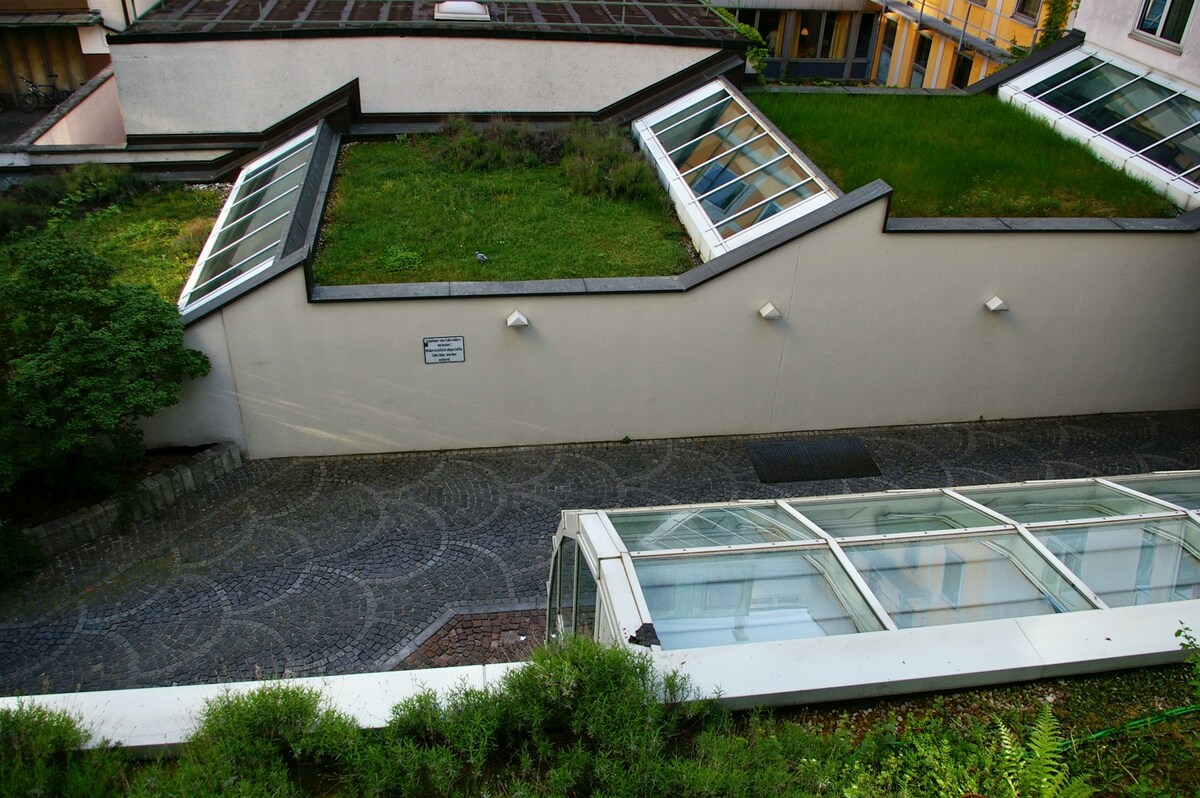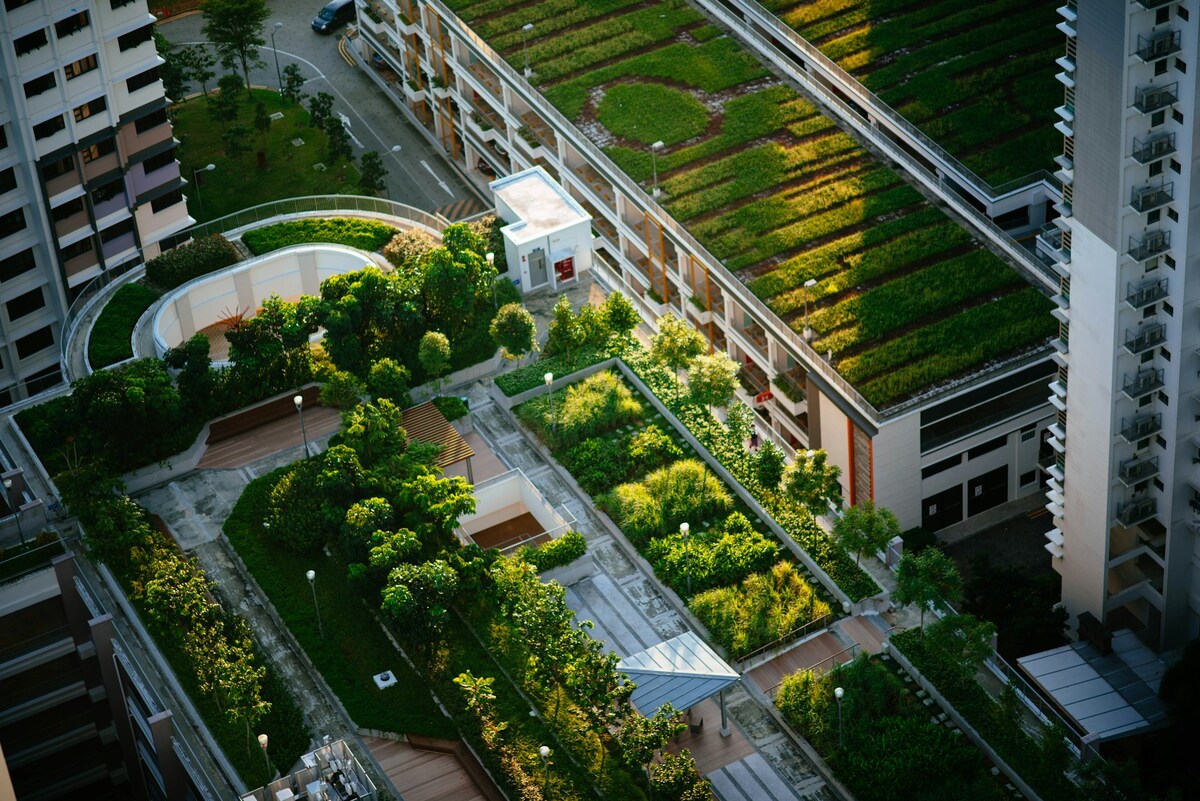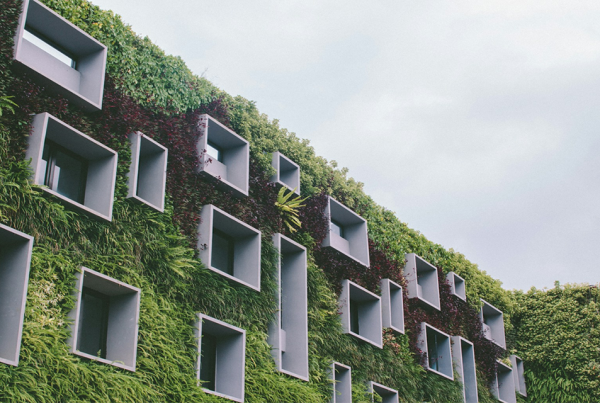Sustainable buildings have evolved to incorporate numerous features. Living architecture is characterized by its direct integration of nature into buildings. Green roofs and bioswales are two notable examples of living architecture known for their ability to manage stormwater. To keep them functional, it’s essential to practice regular maintenance on these features.
The Value of Living Architecture in Sustainable Construction
Sustainable construction has been advancing in various ways. For example, in materials science, self-healing concrete has been investigated for over three decades since it is brittle and prone to cracking under stress. Now, the world is closer to a breakthrough where concrete is fully self-sustainable by integrating it with synthetic lichen.
Living systems are a key facet of sustainable construction, which aims to mitigate the effects of climate change and promote biodiversity. For many projects, the goal is to create LEED-certified living architecture, ensuring these natural elements meet the highest standards for performance and sustainability. This type of architecture can also create a more natural environment for humanity, which is critical in a digital age where people are losing their connection with nature.
Integrating Green Roofs and Bioswales for Sustainable Stormwater Management
Green roofs and bioswales are two iterations of living architecture that have been implemented in many settings.
Green roofs are a setup where the top of a building is partially or fully covered with vegetation. These make cities up to 8° Fahrenheit cooler through evapotranspiration, a process where water in soil and plants creates water vapor. Green roofs can also feature sustainable stormwater management features, such as drainage and irrigation systems. The plants placed on top are ideal for absorbing liquids.
A bioswale is a shallow channel with vegetation that’s designed to collect and treat stormwater runoff. It filters the water sufficiently to make it safe for local waterways, benefiting both local infrastructure and nearby communities.

Green Roof Maintenance
Green roofs enhance aesthetics and manage stormwater effectively. A regular maintenance routine and schedule help ensure consistent performance.
Conduct Routine Cleaning
Conduct a routine inspection at least once a month throughout the green roof and look out for any clogged drains. Stormwater can carry leaves, pebbles and other debris that would keep the water from falling. Spot and remove them during inspection.
Buildings should also have regular cleaning protocols, which can help manage vegetation and maintain their aesthetic appeal. Sweep up any loose trash on the ground and remove any wedged between plants as well.
Choose Low-Maintenance Plants
Maintenance is much simpler if the right plants are placed throughout the roof. Prioritize plants with a high evapotranspiration rate and extreme weather tolerance. Make sure they’re evenly distributed throughout the building’s top to maintain structural integrity. Selecting native plants is also beneficial since they don’t need fertilizer, require fewer pesticides and decrease air pollution.
Manage Irrigation and Drainage
While low-maintenance plants require little attention, it’s still vital to ensure they receive the necessary hydration, especially during drier seasons. Sprinkler systems are standard, but there are other options, such as driplines, for extensive roofs.
Schedule routine inspections specifically for the irrigation system, as well as the drainage system that carries away any excess water. Repairs should be carried out before warm weather for optimal performance.
Additionally, incorporating sustainable drainage solutions is crucial. Effective stormwater management in green roofs and bioswales depends heavily on properly designed and maintained drainage systems. The plumbing system’s health should be a priority when it comes to maintaining any green infrastructure.
For living architecture projects seeking LEED certification, selecting drainage components made from recycled or sustainable materials can earn valuable points under the LEED® Green Building Rating System. Regular maintenance of drainage channels, especially in bioswales where sediment accumulation is common, ensures that these systems continue to function effectively during heavy rainfall events.
This maintenance should include checking that outlet inspection chambers remain accessible and clear of debris, allowing for easy monitoring of the drainage system’s condition and preventing water backup that could damage vegetation or compromise the structural integrity of the green roof.
Inspect for Pests And Weeds
Living architecture can be susceptible to pests and weeds, especially for more elaborate installations, such as green roofs. Stay on the lookout for any harmful insects and get them under control as much as possible. Weeds should also be pulled out to avoid inhibiting the growth of other plants.
Inspect the floors, nooks and crannies as well. Some pests and weeds can create small habitats in unexpected places, just within reach of the vegetation, which raises the likelihood of structural issues.

Bioswale Design and Upkeep
Maintaining a bioswale is crucial for protecting the vegetation while redirecting cleaner water. Be intentional in this process, from creation to long-term management.
Improve Site Preparation
A bioswale has a slight swell and a porous bottom, which helps filter water from buildings to the appropriate waterways. A thorough site assessment can reveal any obstructions that would affect the water’s route.
Soil selection depends on the type of plants that will be planted in it. However, to improve drainage efficiency, the general rule is to have a 5% maximum clay content in the soil mixture.
Select Resilient Plants
Compared to green roofs, a bioswale is more focused on sustainable stormwater management, which requires resilient plants that can provide optimal filtration and resilience.
Juncus and shrubs are the top options since they’re geared toward cleaning rainwater runoff. In terms of species to avoid, cattails and other invasive plants can restrict pond drainage while taking space from other beneficial plants.
Remove Debris Regularly
Bioswales are also prone to accumulating debris and sediment in stormwater runoff, which can impede their overall water flow. Practice regular cleanup and sediment control to maintain the area.
It’s best to conduct these removal sessions more frequently for bioswales since the low slope design drifts water slowly over the surface and any more stagnation can render this living architecture ineffective.
Practice Proactive Maintenance for Sustainability
Living architecture, such as green roofs and bioswales, effectively enhances building sustainability. It’s critical for building owners and builders to work together for its proactive maintenance and to keep the system functioning. This consistent care is what protects the investment and ensures these features deliver their full ecological benefits in the long term.











